I have a working Matlab algorithm for the evolution of a pulse via solving the 1D wave equation. I know the code works and I can see the pulse traveling to the sides and bouncing off the walls, when plotting; but when I translate the corresponding steps as Julia code, however, the results are completely different for the same set of inputs. I insert a simple pulse that should propagate across a string in both directions but that isn't exactly the result that I'm getting in Julia... and I don't know why.
Could anybody help point out what I'm doing wrong?
Thank you,
This is the corresponding Julia code:
using Plots,OhMyREPL
#-solving a PDE.
#NOTE: DOMAIN
# space
Lx = 20
dx = 0.1
nx = Int(trunc(Lx/dx))
x = range(0,Lx,nx)#0:dx:Lx-1
#NOTE: TIME
T = 10
#NOTE: Field variable.
#-variables.
wn = zeros(nx)#-current value.
wnm1 = wn#zeros(nx)#-w at time n-1.
wnp1 = wn#zeros(nx)#-w at time n+1.
# wnp1[1:end] = wn[1:end]#-w at time n+1.
#NOTE: PARAMETERS.
CFL = 1#-CFL = c.dt/dx
c = 1#-the propagation speed.
dt = CFL * dx/c
# #NOTE: Initial Conditions.
wn[49] = 0.1; wn[50] = 0.2; wn[51] = 0.1
wnp1[1:end] = wn[1:end]#--assumption that they are being equaled.
wnp1 = wn#--assumption that they are being equaled.
run = true
if run == true
#NOTE: Initial Conditions.
wn[49] = 0.1; wn[50] = 0.2; wn[51] = 0.1
wnp1 = wn#--wnp1[1:end] = wn[1:end]#--assumption that they are being equaled.
# NOTE: Time stepping loop.
t = 0
while t<T
#-apply reflecting boundary conditions.
wn[1]=0.0;wn[end]=0.0
#NOTE: solution::
global t = t+dt
global wnm1 = wn; global wn = wnp1#-save CURRENT and PREVIOUS arrays.
for i=2:nx-1
global wnp1[i] = 2*wn[i] - wnm1[i] + CFL^2 * ( wn[i+1] -2*wn[i] + wn[i-1] )
end
end
plot(x,wnp1, yrange=[-0.2,0.2])
end
Only one peak

This is the corresponding Matlab code:
%Domain
%Space.
Lx = 20;
dx = 0.1;
nx = fix(Lx/dx);
x = linspace(0,Lx,nx);
%Time
T = 10;
%Field Variables
wn = zeros(nx,1);
wnm1 = wn;
wnp1 = wn;
%Parameters...
CFL = 1;
c = 1;
dt = CFL*dx/c;
%Initial conditions
wn(49:51) = [0.1 0.2 0.1];
wnp1(:) = wn(:);
run = true;
if run == true
%Initial conditions
wn(49:51) = [0.1 0.2 0.1];
wnp1(:) = wn(:);
%Time stepping loop
t = 0;
while t<T
%Reflecting boundary conditions:
wn([1 end]) = 0.0;
%Solution:
t=t+dt;
wnm1=wn;wn = wnp1;%-save current and previous arrays.
for i=2:nx-1
wnp1(i) = 2*wn(i) - wnm1(i) + CFL^2 * ( wn(i+1) - 2*wn(i) + wn(i-1) );
endfor
end
plot(x,wnp1)
end
Two peaks, as it should be.

If anybody could point me in the right direction, I'd greatly appreciate it.